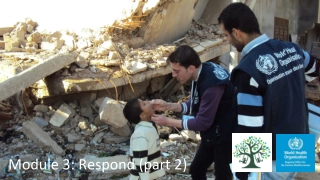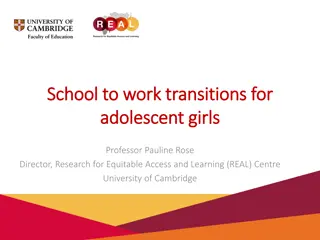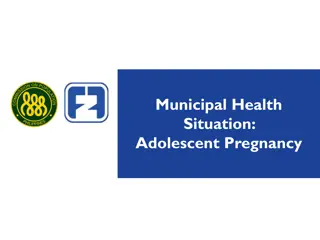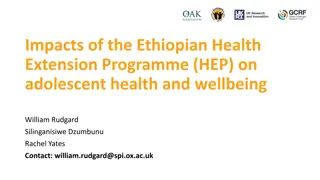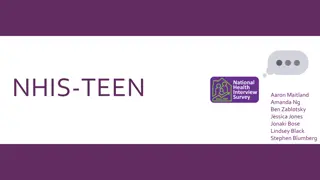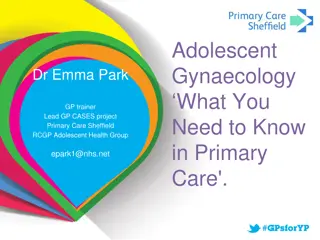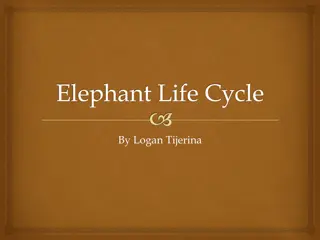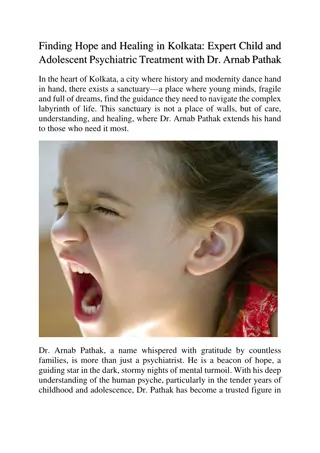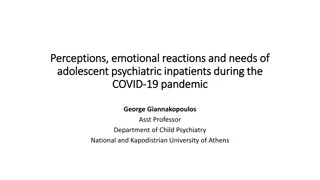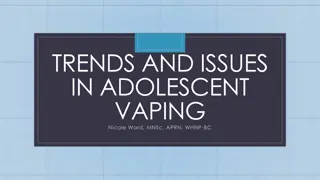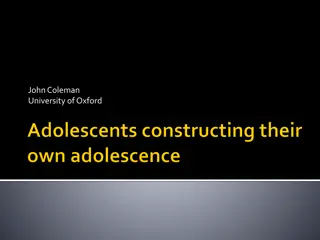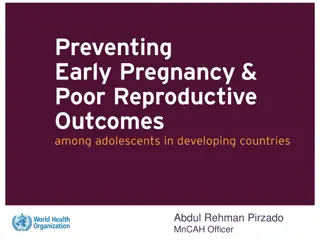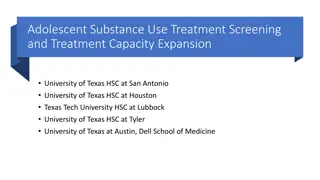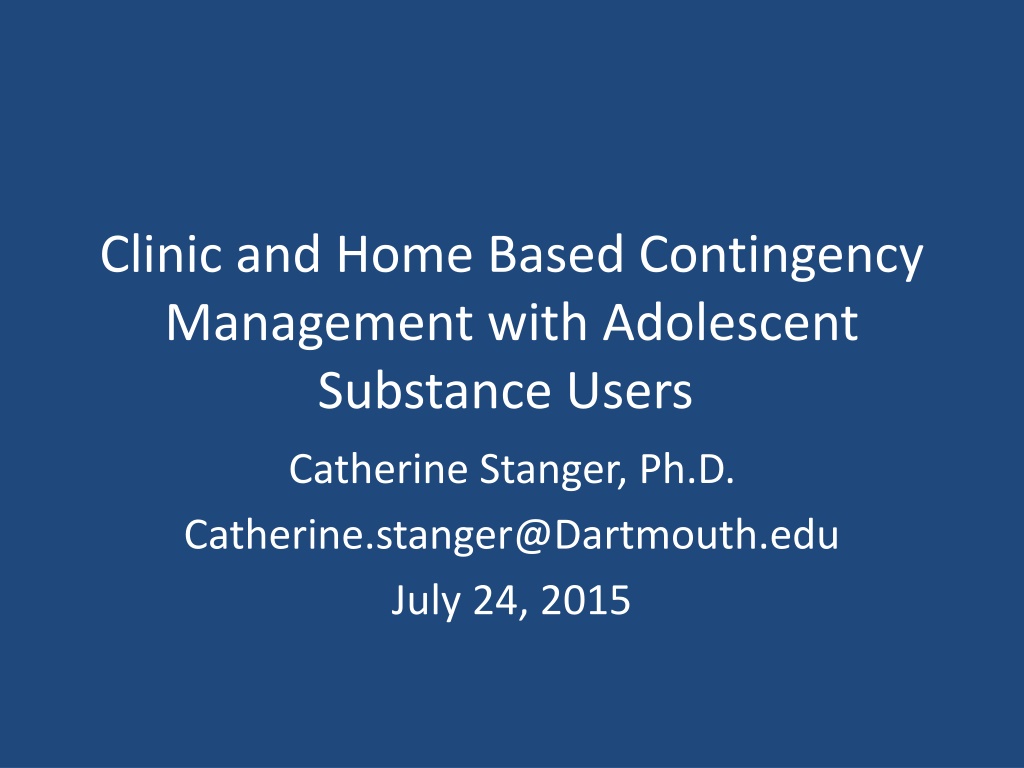
Contingency Management for Adolescent Substance Users
Explore the effectiveness of Contingency Management (CM) in managing behaviors of adolescent substance users. Learn about the targets, characteristics, and monitoring involved in CM interventions, aimed at promoting drug abstinence and treatment attendance. Discover how CM arranges a therapeutic environment with reinforcing or punishing events based on achieved behaviors.
Download Presentation

Please find below an Image/Link to download the presentation.
The content on the website is provided AS IS for your information and personal use only. It may not be sold, licensed, or shared on other websites without obtaining consent from the author. If you encounter any issues during the download, it is possible that the publisher has removed the file from their server.
You are allowed to download the files provided on this website for personal or commercial use, subject to the condition that they are used lawfully. All files are the property of their respective owners.
The content on the website is provided AS IS for your information and personal use only. It may not be sold, licensed, or shared on other websites without obtaining consent from the author.
E N D
Presentation Transcript
Clinic and Home Based Contingency Management with Adolescent Substance Users Catherine Stanger, Ph.D. Catherine.stanger@Dartmouth.edu July 24, 2015
Objectives Overview of Contingency Management Results from our adolescent CM trials Review clinical application, primarily focused on home-based procedures
What is Contingency Management? CM programs arrange the therapeutic environment such that target behaviors such as drug abstinence, counseling attendance, and medication compliance are carefully monitored reinforcing or punishing events (eg, tangible rewards or incentives, suspension of employment or school, loss of privileges) occur when the target behavior is or is not achieved
Determining Characteristics of CM I used CM is more like I used medication than I used CBT or I used MI CM interventions vary in their: Target(s) Monitoring Schedule of Reinforcement Magnitude of Reinforcement Type of Consequence
CM Targets Abstinence is the recommended primary target Currently, a reduction in use target (quantitative urine drug testing) is not practical/feasible for drug abuse due to the frequency of testing required Attendance or other therapeutic tasks can be targets but may not result in drug abstinence Select achievable target (short period of abstinence, especially early in treatment).
Monitoring Target must be verified using biochemical or other objective measure Monitoring schedule must match schedule of reinforcement You can t reinforce more frequently than you are monitoring (e.g., if you monitor monthly, can t reward weekly)
Schedule of Reinforcement Minimize delay between target behavior and reinforcement Use frequent reinforcement especially early in treatment (weekly or even more often) Creative use of different schedules guided by behavioral principles of reinforcement e.g., prize bowl vs. vouchers
Magnitude of Reinforcement Higher magnitude incentives are more potent than lesser magnitude Some intermittent schedules (e.g., fishbowl) are effective, but magnitude still has a large influence on outcomes
Type of Consequence Use a variety of reinforcers Allow client choice when possible Can include nonmonetary reinforcers (privileges, praise).
CM is moving beyond substance use to a variety of health behaviors Weight loss Medication adherence Immunization Medical regimen adherence
CM for medication adherence (Petry et al., 2012)
Largest CM effect sizes Interventions that were longer in duration provided average reinforcement of $50/week reinforced patients at least weekly
EDITED BY DAVID LEONHARDT FOLLOW US: GET THE UPSHOT IN YOUR INBOX THE NEW HEALTH CARE Paying People to Be Healthy Usually Works, if the Public Can Stomach It JULY 6, 2015 Few people seem comfortable with the idea of paying patients to do what we want them to do. Aaron E. Carroll That s unfortunate, because there s a significant amount of research that says this works. Email Pete Ryan I m not talking about things like wellness programs, which offer reductions in insurance premiums if you do what your employer wants. Those are really a means of cost- sharing in which expenses are shifted onto people who are less healthy. I m talking about paying incentives directly to people in exchange for changes to their behavior or health. Share Tweet Save More
Our Clinic Based Adolescent CM program Target Abstinence from MJ, alcohol, and other drugs Monitoring 1x or 2x weekly monitoring: urine testing, self report, parent report Schedule of Reinforcement Earn incentive for each documented period of abstinence; Incentives increase with consecutive periods of abstinence; Reset for use Magnitude of Reinforcement $590 over 14 weeks in the clinic Type of Consequence Clinic uses using reloadable credit cards [ctpayer] to provide incentives
Home Based Adolescent CM Parent contracts with teen for rewards and consequences based on substance use status Contract is implemented once or twice weekly, on same schedule as urine drug testing and clinic CM program Same target, monitoring, and schedule as clinic CM Individualized magnitude and type of reward/consequence
Initial Trial (Vermont) Stanger et al., 2009 All teens received: Individual Motivational Enhancement Therapy/ Cognitive Behavior Therapy Manualized, tested in the CYT trial (Dennis et al., 2004) Twice weekly urine drug testing (parents informed) Randomized to receive: Contingency Management + Parent Training (Dishion + Kavanaugh, 2003) or Participation incentives + Parent Drug Education
N=69 Randomly Assigned N=33 N=36 14 weeks MET/CBT 2x/week UA 14 weeks MET/CBT 2x/week UA Participation Incentives Abstinence Based Incentives Parent Substance Monitoring Contract Parent Drug Education Parent Training Post RX 12 weekly UAs Post RX 12 weekly UAs
VT Study: Mean Weeks of Continuous Abstinence CBT+CM>CBT+PDE, p<.05
Arkansas Trial Design Stanger et al. (2015) 3 Condition, Randomized Trial N=153 adolescents Designed to isolate the efficacy of CM vs. CM+Parent Training
N=153 Randomly Assigned N=51 N=51 N=51 14 weeks MET/CBT 2x/week UA 14 weeks MET/CBT 2x/week UA 14 weeks MET/CBT 2x/week UA Participation Incentives Abstinence Based Incentives Abstinence Based Incentives Parent Substance Monitoring Contract Parent Substance Monitoring Contract Parent Training Post RX 12 weekly UAs Abstinence Based CM 6 Parent Booster Sessions Post RX 12 weekly UAs Abstinence Based CM 6 Parent Booster Sessions Post RX 12 weekly UAs Participation Incentives
Inclusion/Exclusion Criteria DSM-IV Marijuana abuse or dependence MJ use in past 30 days OR THC positive urine drug test Age 12-18 Not dependent on any other substance (except tobacco)
During and End of Treatment Marijuana Abstinence * Chi Square Analyses: Both CM groups > MET/CBT (p<.05)
Post Treatment Abstinence 0.8 0.6 Prob(Abstinence) MET/CBT MET/CBT+CM MET/CBT+CM+PT 0.4 0.2 0.0 0 2 4 6 8 10 12 Months Post-Treatment GEE analysis with paired contrasts Significant relapse in MET/CBT (p<.05): no differences between conditions
Marijuana Use Frequency 3.0 2.5 MET/CBT MET/CBT+CM MET/CBT+CM+PT 2.0 Use Frequency (Scale 0-3) 1.5 1.0 0.5 0.0 Intake ETX 3M 6M 9M 12M 0=0% days used, 1=greater than 0 and less than 15% of days used, 2=15% or more and less than 50% of days used, and 3=50% or more days used; during treatment improvement sustained post treatment
Summary Replicated positive CM effects on abstinence during treatment in a more diverse, lower SES, sample. Parent training did not enhance effects on abstinence during or post treatment. Maintenance of abstinence was poor across all treatments; reductions in use frequency were sustained
AR Alcohol Study Similar to MJ trial except: Alcohol abuse/dependence or binge episodes was inclusion criteria Used Fishbowl (same magnitude as voucher program) Used EtG (ethyl glucuronide) to measure alcohol use in urine samples
N=75 Randomly Assigned N=38 N=37 14 weeks MET/CBT 1x/week UA 14 weeks MET/CBT 1x/week UA Participation Incentives Abstinence Based Incentives Parent Substance Monitoring Contract Parent Training Post RX 12 weekly UAs Post RX 12 weekly UAs
Demographics MET/CBT+CM+PT (n = 37) 27 (73.0%) 8 (21.6%) 6.2 (2.2) 16.1 (1.2) 30 (81.1%) 12% (16%) 5.7 (4.9) 13 (35.1%) 28% (35%) 7 (18.9%) 12 (32.4%) 10 (27.0%) 18 (48.6%) MET/CBT (n = 38) 29 (76.3%) 6 (15.8%) 7.2 (1.6) 16.2 (1.2) 30 (79.0%) 12% (14%) 6.4 (4.5) 13 (34.2%) 27% (34%) 7 (19.4%) 14 (36.8%) 19 (50.0%) 7 (18.4%) Male Minority Mean SESc Mean Age Tobacco user Intake % days used alcohol Mean drinks per drinking day Intake cannabis positive urine Intake % days used cannabis Alcohol Dependence Alcohol Abuse MJ Dependence MJ Abuse
Alcohol vs. Marijuana Samples Youth using alcohol +/- marijuana Were higher SES Less likely to be minority More likely to be female Similar days of cannabis use on average More likely to use tobacco
Positive via Self vs. Parent vs. UA results 100 90 80 % of positive samples 70 * 60 50 40 30 20 10 0 Alcohol Cannabis Self Report Parent Report ETG/THC Alcohol less likely to be positive via UA in the absence of self or parent report than cannabis
Abstinence Effects There were no differences across treatment conditions in the % of youth having ANY vs. NO substance use during or post treatment About of the youth in both conditions were abstinent during and post treatment Traditional statistical approaches (assuming normal distribution) not appropriate
During Treatment Abstinence from Alcohol and Cannabis: Number of Positive UAs 14 Mean Number of Positive UA if any POS 12 10 * 8 * 6 4 2 0 Alcohol Cannabis MET/CBT MET/CBT/CM ZIP analysis: MET/CBT+CM+PT had fewer positive cannabis samples among those with at least 1 positive sample; no difference in number of positive alcohol samples
During Treatment Alcohol and Cannabis Use Days: Percent Days Used if Used Any Days 30 Mean Percent Days Used if ANY use 25 20 * 15 10 * 5 0 Alcohol Cannabis MET/CBT MET/CBT/CM ZIP analysis: MET/CBT+CM+PT had fewer alcohol days used if any alcohol was used. Cannabis result is significant when controlling for SES and Cannabis Dependence
During Treatment Summary Many youth showed complete abstinence based on UAs in both conditions (about 50%) CM did not increase the odds of complete abstinence Among those not completely abstinent, those receiving CM achieved more weeks of marijuana (but not alcohol) abstinence However, rates of alcohol use were generally low across conditions And, alcohol use may not be a substance use target appropriate for CM if testing only weekly (need more frequent testing to detect than for marijuana) Among those reporting some alcohol use during treatment, those receiving CM reported fewer days of use A similar effect was seen for cannabis when controlling for SES and marijuana dependence
Post Treatment Summary Close to half of all youth also showed complete abstinence based on self report in the 9 month post treatment period CM again did not increase the odds of complete abstinence Among those not completely abstinent, those receiving CM reported fewer percent days of alcohol and marijuana use in the 9 months after treatment
Post Treatment Alcohol and Cannabis Use Days: Percent Days Used if Used Any Days 40 35 Mean Percnt of Days Used if ANY use * 30 25 * 20 15 * 10 5 0 Alcohol Cannabis MET/CBT MET/CBT/CM ZIP analysis: MET/CBT+CM+PT had fewer alcohol and marijuana use days used if any was used; this difference was no longer significant for MJ after controlling SES and MJ Dependendence
Mean Drinks and Binges Both show sustained improvements over time, across treatment conditions There were similar sustained improvements in both conditions in externalizing symptoms, positive parenting, parental monitoring, and negative discipline.
Alcohol Study Summary Despite differences in the sample characteristics, we see similar during treatment benefits of CM Post treatment effects are somewhat stronger in this higher SES, less minority sample We replicated our finding of improvement across treatment conditions in parenting and conduct problems.
Cannabis Use Cluster Analysis across all 3 CM trials Treatment Response Subgroups for Cannabis Use 100% 90% Non-Responders (n=15) 80% 70% Cannabis Use (% Days) Relapsers (n=25) 60% 50% 40% High Use Responders (n=45) 30% 20% Low Use Responders (n=109) 10% 0% Intake ETX 3 Months 6 Months 9 Months Assessment Point 75% of participants show sustained improvements in use frequency
Predictors, Moderators, Mediators Timing of Abstinence Parent Monitoring Disruptive Behavior Disorders
Timing of Abstinence: Early or Not at All? MJ Survival, 1wk by CM 1.0 No CM CM 0.8 % acheiving 1 week of abstinence 0.6 Log-Rank test p-value= 0.0328 0.4 0.2 0.0 0 2 4 6 8 10 12 14 Weeks in Treatment Hazard function: Onset of first week of abstinence; Brown et al., 2012
Abstinence in Week 6 Predicts Post Treatment Outcome Chi Square at each time point: If Week 6 UA is negative for THC, each follow up UA is significantly more likely to be negative for THC
CM improves the trajectory - 51% of CM and 35% of non CM youth were abstinent in Week 6 - Across conditions if abstinence does not occur by week 6, it is unlikely to occur - Week 6 abstinence is a strong predictor of during and post treatment abstinence - We are beginning a trial that will re-randomize teens who are not abstinent in week 4 to a higher level of care (higher magnitude CM for teens)
Improvement in Parent Monitoring Predicts Lower Post Treatment Marijuana Use .43 .66 Intake Poor Monitoring End of Tx Poor Monitoring .15 .36 -.26 Post Tx CBT+CM MJ Use X2(22)=33.9, p=.05, TLI=.95, RMSEA=.059; n=153, AR sample; Replication of Stanger et al., 2009
Parent Monitoring Improvements in parental monitoring are a consistent predictor of treatment outcome Over and above assigned treatment condition Our hypothesis is that sharing weekly urine drug test results with parents may prompt improved monitoring Because CM does not predict monitoring improvements, it is important to continue to develop new interventions that target this important parenting behavior Our new trial targets time outside adult supervision among those not abstinent in Week 6
ODD/CD Moderates Treatment Response 6 Mean Weeks of MJ Abstinence 5 4 MET/CBT Only 3 MET/CBT+CM 2 1 0 NO DBD (N=84) DBD (N=69) Significant DBD x CM interaction; independent replication of VT finding (Ryan et al., 2012) (similar results for both CM conditions)
Conduct Problems: Future Tailoring Variable? Teens without ODD +/or CD showed similar response across interventions Suggesting individual MET/CBT + Urine drug testing and participation incentives might be the appropriate first line treatment for this group. Teens with ODD +/or CD had outcomes similar to youth without ODD/CD if they received CM These youth seem to benefit greatly from CM and parent contracting
Summary CM consistently resulted in better during treatment outcomes. Post treatment effects are weaker and less consistent Our CM includes both clinic and home based components. The independent effects of each are not known (but some recent negative findings for clinic based ONLY) Guided by these findings on moderators of response, we are attempting to boost outcomes in our current trial


